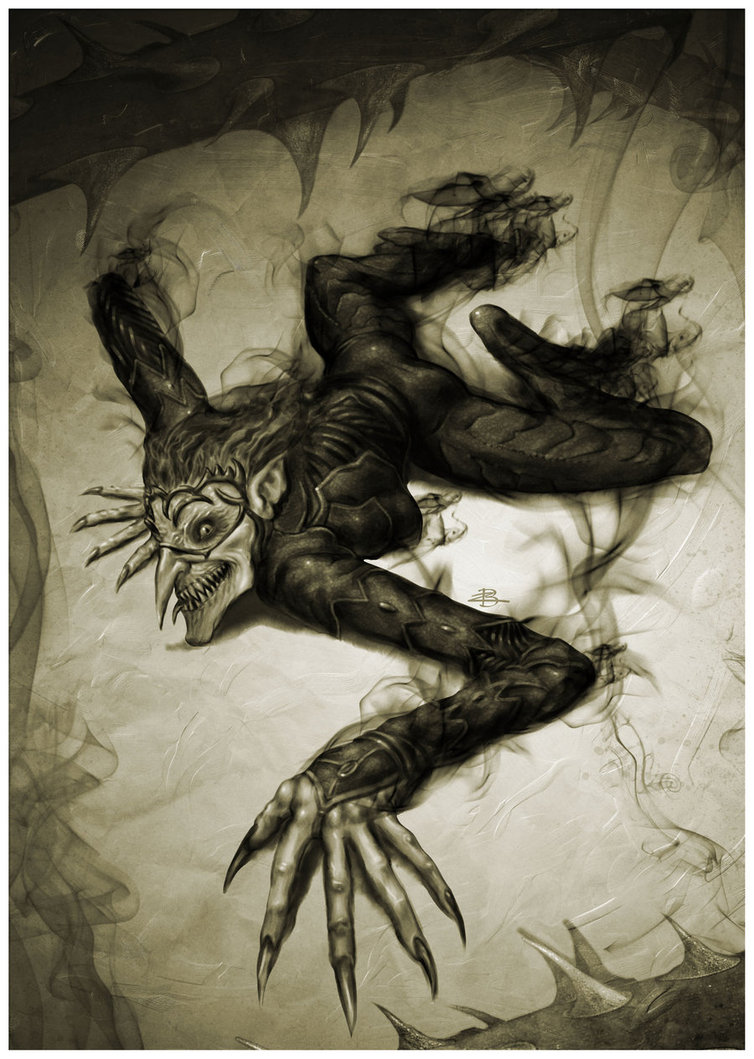
1) How is the Erl-King presented?
Angela Carter presents the Erl-King as desirable yet deadly, as if he is the ultimate predator for the female protagonist. From previous German texts, we know that the Erl-King is not a pleasant character, his name is known to be someone who lures and tricks people. To the female protagonist in The Erl-King, something that impresses her is someone who can help out around the house, so the Erl-King has this feature 'he is an excellent house wife' because it adds to her attraction to him. From looking at the gender binary opposites, the reader would not expect this quality in a male but it could be this private quality that draws her to him even more.
On the other hand the Erl-King is also portrayed as the monstrous dominating character a female would expect to meet in a patriarchal society. Carter makes the character sound like a predator by describing him with 'white, pointed teeth with the spittle gleaming on them'. From looking at this with a female lens, we can conclude that the Erl-King is only being kind to the female because he wishes to make her his. In other words 'pointed teeth' creates a semantic field of hunger, giving the impression that he wishes to devour her, thus representing men who think they are dominant to women.
2) How is the narrator presented?
When Carter uses the 1st person narrator she makes the reader sympathise with the protagonist because you see and think as she does. When the narrator says 'I knew from the first moment I saw him how Erl-King would do me grievous harm' it is showing the reader how innocent and vulnerable the female is, which therefore leads to the reader foreshadowing what will happen during the story - the Erl-King taking advantage of her virginity.
3) How does Carter use symbols in this narrative?
The Erl-King is a representation of the Green-man (who is usually depicted as a kind and good character) in his descriptions 'the rusty fox, its muzzle sharpened to a point, laid its head upon his knee'. The green man motif is usually symbolism of rebirth, thus representing the rebirth of the female protagonist when she loses her virginity and gains her strength when she kills him.
4) How does carter use allusion (inter-textual references) to tell the story?
5) 'The Erl-King' is the most innovative and experimental of the narratives.
‘The Erl-King’ can be seen as the most innovative and experimental of the narratives as it plays around with the voice of the narrator and tenses of the the text. 'The woods enclose and then enclose again' is in third person but also present tense, when Carter says 'It is easy to lose yourself in these woods.' she reverts to second person. This suggests that 'The Erl-King' is the most experimental as none of the other texts do this and it also gives the reader a sense of reality, as in they are the protagonist in the story.
6) How does 'The Erl King' connect to other 'TBC' narratives?
'The Erl-King' is the middle story of the collection and therefore isn't completely transcending of the binary opposites and isn't completely supporting of them either. It involves similarities with the fact that the setting is isolated and there is a female narrator (the same with all the stories minus Puss In Boots). The protagonist kills the male figure (the same with The Bloody Chamber, and company of wolves).
No comments:
Post a Comment